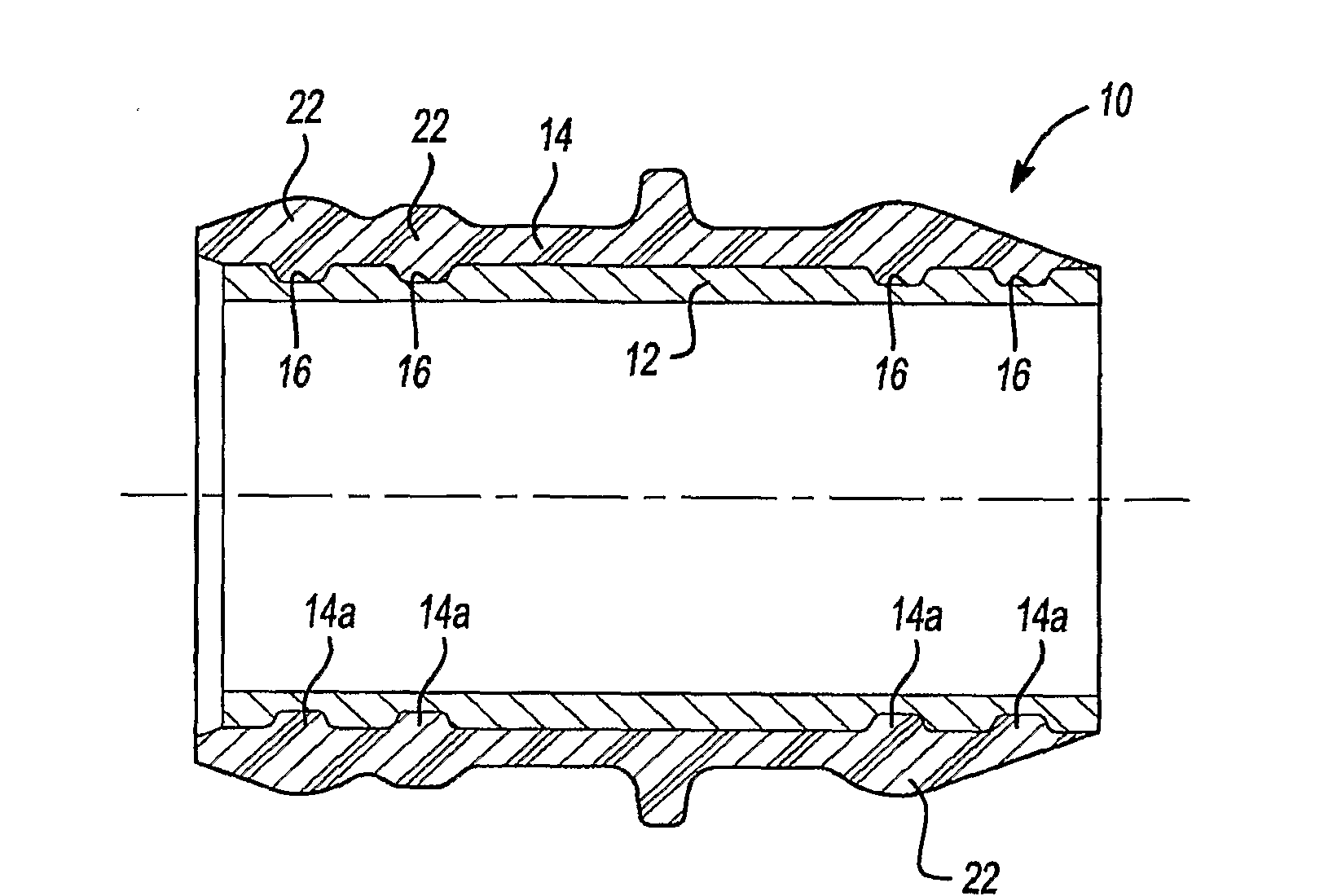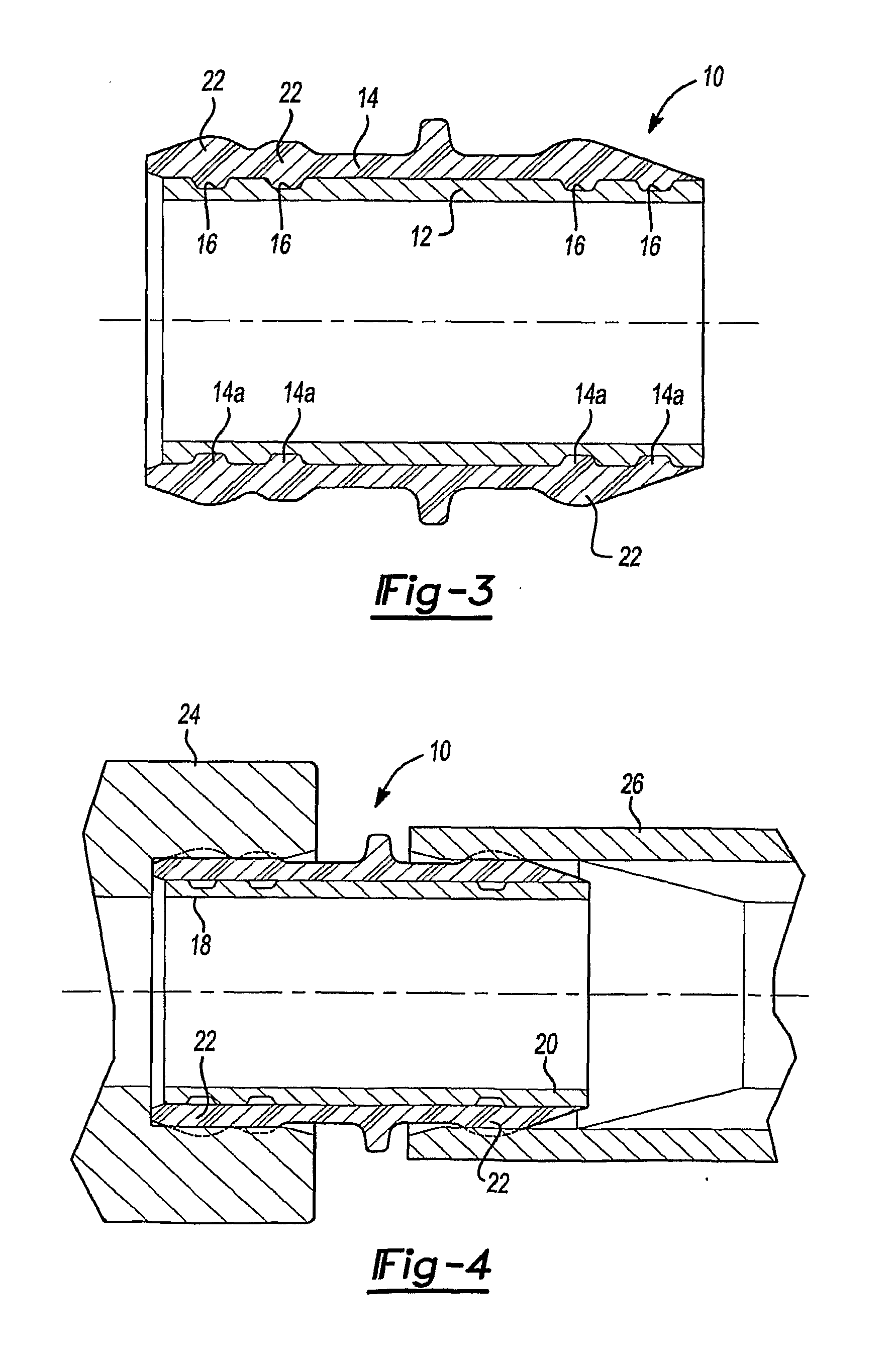Tube Seal Components
a technology of tube seals and components, applied in the direction of sleeves/socket joints, mechanical devices, cable terminations, etc., can solve the problems of inability to compensate for the inability of the seal to work, reliance on the adhesive bond between the tube, and missing o-rings, etc., to achieve acceptable seal performance and minimize the effect of pressur
- Summary
- Abstract
- Description
- Claims
- Application Information
AI Technical Summary
Benefits of technology
Problems solved by technology
Method used
Image
Examples
Embodiment Construction
[0032]The following description is merely exemplary in nature and is not intended to limit the present disclosure, application, or uses. It should be understood that throughout the drawings, corresponding reference numerals indicate like or corresponding parts and features.
[0033]FIG. 2 shows a prior art tube seal 200 including a metal cylindrical tube 202 and an elastomeric seal body 204 molded to an outer surface of the cylindrical tube 202. The elastomeric seal body includes raised bead portions 206 on each end thereof. A problem with the prior art design is that adhesive bond between the tube 202 and the seal body 204 is subject to failure.
[0034]With reference to FIG. 1, a tube seal 10 according to the principles of the present disclosure will now be described. The tube seal 10 includes a rigid cylindrical tube 12 and an elastomeric seal body 14 molded to an outer surface of the rigid cylindrical tube 12. The rigid cylindrical tube 12 can be made from metal, plastic, or other rig...
PUM
 Login to View More
Login to View More Abstract
Description
Claims
Application Information
 Login to View More
Login to View More - R&D
- Intellectual Property
- Life Sciences
- Materials
- Tech Scout
- Unparalleled Data Quality
- Higher Quality Content
- 60% Fewer Hallucinations
Browse by: Latest US Patents, China's latest patents, Technical Efficacy Thesaurus, Application Domain, Technology Topic, Popular Technical Reports.
© 2025 PatSnap. All rights reserved.Legal|Privacy policy|Modern Slavery Act Transparency Statement|Sitemap|About US| Contact US: help@patsnap.com



